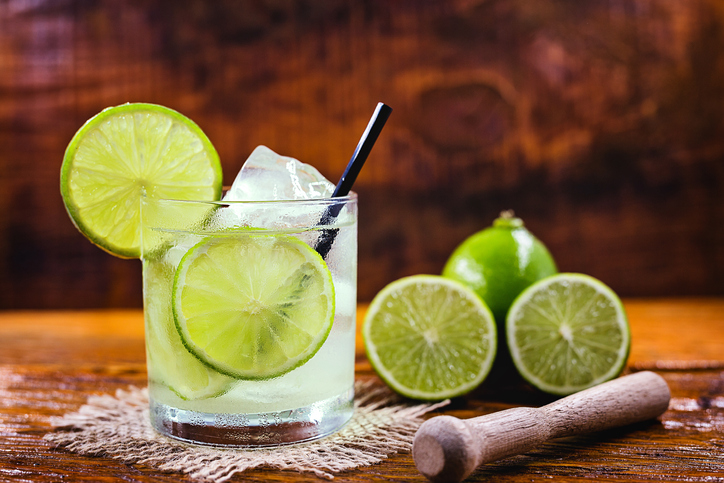Cachaça: The Rising Star in the U.S. Spirits Market

What do Katy Perry, John Travolta, Chris Pratt, and Snoop Dogg have in common? They all share a passionate love for “Saúde,” which is Portuguese for “Cheers.” These iconic figures have either invested in Cachaça ventures or proudly declared themselves enthusiastic fans of the quintessential Brazilian spirit. Officially the oldest spirit in the Americas, Cachaça, often affectionately referred to as the “Mother of Rum,” is rapidly gaining a firm foothold in the U.S. market.
The growth of Cachaça has been nothing short of spectacular, with an astounding increase of 2,439.57% between 1997 and 2022. This surge is beginning to challenge the dominance of Tequila and Rum, signaling a fascinating shift in the spirits landscape. As indicative of this change, articles like “Why You Should Be Sipping Cachaça, Brazil’s Most Popular Spirit,” appeared on Martha Stewart’s blog in August 2023, a testament to Cachaça’s journey from obscurity to celebration. The PUNCH article on Cachaça Mixology, titled “How to Use Cachaça in Cocktails,” further underscores the spirit’s rising popularity. But to concretely verify these hypotheses, we must also analyze data from international commerce institutes and industry-specific associations.
This article delves into the remarkable journey of Cachaça and explores the myriad factors contributing to its impressive growth. Our primary focus is on the United States market, where we’ve witnessed nothing short of a Cachaça revolution. Regulatory adjustments, an emphasis on quality and premiumization, the art of Cachaça mixology, innovative bottle designs, and a growing appreciation of the spirit’s versatility have all played pivotal roles in Cachaça’s renaissance.
A Sip of History – From “Brazilian Rum” to Something More
Recent developments have paved the way for Cachaça’s emergence as a distinctive Brazilian product. The words of the legendary Brazilian sociologist, anthropologist, historian, and writer Gilberto Freyre hold true, “Cachaça comes from the oldest days in Brazil.” This sentiment resonates with the historical significance of Cachaça in Brazil’s cultural tapestry, dating back to the colonial era.
Recent research from the University of Bahia suggests that Cachaça was likely discovered between 1516 and 1532, along the Itamaraca-Sao Vincente coastline. This predates the development of Rum in Barbados by over a century, emphasizing Cachaça’s deep roots in Brazilian history. What’s even more intriguing is that some sugar mills in Brazil have been producing Cachaça for an astonishing 300 to 400 years. Out of over 4,950 active Cachaça brands today, 52 of them trace their origins back to 1901 or earlier, showcasing a rich tradition that sets Cachaça apart from other spirits.
Cachaça’s Unique Versatility
Cachaça distinguishes itself among spirits with its remarkable versatility, deeply rooted in its Brazilian heritage. It offers a diverse range of aromas, influenced by the terroir and over 20 types of aging woods. The combination of fruity, floral, spicy, earthy, toasted, and nutty notes sets it apart. The sensory experience Cachaça provides is unmatched, making it a treasure for mixologists and spirits enthusiasts. Renowned cocktail and spirits specialist David Wondrich describes it as one of the smoothest spirits, with delicate, subtle, clean, and bright characteristics, free from burnt cane notes.
Cachaça Barrels – Crafted from Different Woods
Cachaça’s complex profile is significantly shaped by the aging process in wooden barrels. French and American Oak, along with indigenous Brazilian woods like Umburana, Peanut, Balm, and Jequitibá, add distinct flavors and aromas, further enhancing Cachaça’s versatility.
Cachaça categorizes its products into six distinctive levels, each tailored for specific preferences and occasions, catering to a wide range of tastes, events, and budgets. This flexibility allows Cachaça to accommodate casual gatherings and grand celebrations, making it an attractive choice for various occasions.
Cachaça’s Ascension into the U.S. Market
Understanding the performance trends of spirits in a specific country is a complex task that involves more than just numbers. It delves into consumer habits and societal context. In 2012, Diageo’s acquisition of Brazil’s second-largest producer, Ypioca, for $453 million marked a significant milestone. Cachaça Leblon’s success story, acquired by Bacardi in under a decade, further highlighted the global appeal of this Brazilian gem.
The 2022 performance saw Brazil rejoin the competition with countries traditionally associated with rum production, such as Guatemala, the Dominican Republic, Nicaragua, and Jamaica. While the numbers may appear modest at first, they paint a compelling picture of Cachaça’s ascent in the United States.
In 1999, the United States imported a mere $204,153 worth of low-quality industrial Cachaça, representing only 3.6% of Brazil’s Cachaça exports. Fast forward to 2022, and the United States registered a record-breaking $5,177,526 worth of Cachaça, marking a 2,439.57% increase from 1997 to 2022. The majority of these imports comprise premium products, reflecting a significant shift from the industrial non-aged categories of the past.
Today, the iconic Brazilian cocktail, the caipirinha, graces the menus of upscale restaurants and bars across major U.S. cities. Renowned churrasco chain Fogo de Chão features its own private label Cachaça brand, offering a variety of Cachaça categories to customers, further strengthening Cachaça’s position in the U.S. market.
In conclusion, Cachaça has come a long way, from its historical roots to its flourishing presence in the United States. It has triumphed over challenges and limitations to establish itself as a sought-after spirit with a unique character, versatility, premiumization capacity, and a rich heritage. With resolved regulatory matters, the traction of Geographical Indication treaties, and a growing awareness, Cachaça is poised to ascend even higher on its journey to becoming a celebrated global spirit icon. ‘Vamos nessa!’
Source: Andre Skowronski – Innovun Business Consulting












